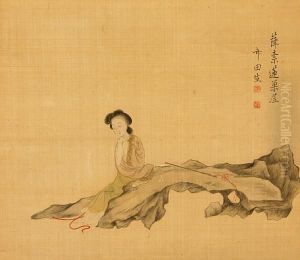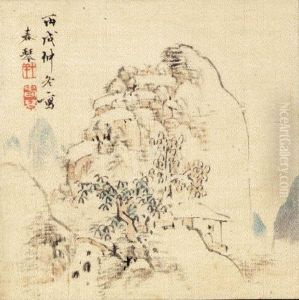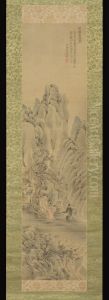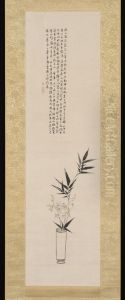Tanomura Chikuden Paintings
Tanomura Chikuden, born on October 14, 1777, in Bungo Province (present-day Oita Prefecture), was a notable Japanese painter of the late Edo period. He is particularly renowned for his literati-style ink paintings, following the tradition of the Chinese Southern School (Nanga or Bunjinga in Japanese). Chikuden's real name was Tanomura Chikuden, with 'Chikuden' being his art name (gō).
Coming from a samurai family, Chikuden initially embarked on a career in the local government, but his deep passion for painting and literature led him to pursue a life dedicated to the arts. He was heavily influenced by the works of Chinese literati painters and scholars, which is evident in his own artistic style that emphasized spontaneity, simplicity, and a deep communion with nature.
Chikuden's life was marked by a devotion to the study of Chinese classics and the practice of calligraphy, both essential aspects of the literati lifestyle. He studied under the prominent painter Tani Bunchō in Edo (now Tokyo) and later worked to cultivate his own distinct style. Chikuden's paintings often featured landscapes, flowers, and birds, characterized by their elegant brushwork and refined use of ink washes.
Despite his talent and contributions to the Nanga movement, Chikuden experienced financial difficulties throughout his life. He often had to rely on support from patrons and disciples. Nevertheless, he continued to produce a substantial body of work and was also an influential teacher, with several students who would go on to become notable artists in their own right.
After his death on September 6, 1835, Chikuden's legacy continued to thrive, and he was remembered as a key figure in the development of the Japanese literati painting tradition. His works are still admired for their poetic and expressive qualities, and they have been preserved in various collections, both in Japan and internationally.






